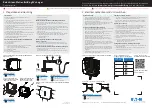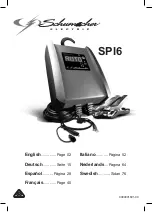
’04 HIGHLANDER_U (L/O 0308)
235
2004 HIGHLANDER from Aug. ’03 Prod. (OM48478U)
For example, nearby buildings and terrain
can interfere with FM reception. Power
lines or telephone wires can interfere with
AM signals. And of course, radio signals
have a limited range. The farther you are
from a station, the weaker its signal will
be. In addition, reception conditions
change constantly as your vehicle moves.
Here are some common reception prob-
lems that probably do not indicate a prob-
lem with your radio:
FM
Fading and drifting stations—Generally, the
effective range of FM is about 40 km (25
miles). Once outside this range, you may
notice fading and drifting, which increase
with the distance from the radio transmit-
ter. They are often accompanied by distor-
tion.
Multi
−
path—FM signals are reflective,
making it possible for two signals to reach
your antenna at the same time. If this
happens, the signals will cancel each oth-
er out, causing a momentary flutter or
loss of reception.
Static and fluttering—These occur when
signals are blocked by buildings, trees, or
other large objects. Increasing the bass
level may reduce static and fluttering.
Station swapping—If the FM signal you
are listening to is interrupted or weak-
ened, and there is another strong station
nearby on the FM band, your radio may
tune in the second station until the origi-
nal signal can be picked up again.
AM
Fading—AM broadcasts are reflected by
the upper atmosphere—especially at night.
These reflected signals can interfere with
those received directly from the radio sta-
tion, causing the radio station to sound
alternately strong and weak.
Station interference—When a reflected sig-
nal and a signal received directly from a
radio station are very nearly the same
frequency, they can interfere with each
other, making it difficult to hear the broad-
cast.
Static—AM is easily affected by external
sources of electrical noise, such as high
tension power lines, lightening, or electri-
cal motors. This results in static.
CARING FOR YOUR CASSETTE PLAYER
AND TAPES
For the best performance for your cas-
sette player and tapes:
Clean the tape head and other parts regu-
larly.
D
A dirty tape head or tape path can
decrease sound quality and tangle your
cassette tapes. The easiest way to
clean them is by using a cleaning tape.
(A wet type is recommended.)
Use high
−
quality cassettes.
D
Low
−
quality cassette tapes can cause
many problems, including poor sound,
inconsistent playing speed, and
constant auto
−
reversing. They can also
get stuck or tangled in the cassette
player.
D
Do not use a cassette if it has been
damaged or tangled or if its label is
peeling off.
D
Do not leave a cassette in the player
if you are not listening to it, especially
if it is hot outside.
D
Store cassettes in their cases and out
of direct sunlight.
Содержание 2004 HIGHLANDER
Страница 128: ... 04 HIGHLANDER_U L O 0308 104 2004 HIGHLANDER from Aug 03 Prod OM48478U ...
Страница 136: ... 04 HIGHLANDER_U L O 0308 112 2004 HIGHLANDER from Aug 03 Prod OM48478U ...
Страница 148: ... 04 HIGHLANDER_U L O 0308 124 2004 HIGHLANDER from Aug 03 Prod OM48478U ...
Страница 162: ... 04 HIGHLANDER_U L O 0308 138 2004 HIGHLANDER from Aug 03 Prod OM48478U ...
Страница 186: ... 04 HIGHLANDER_U L O 0308 162 2004 HIGHLANDER from Aug 03 Prod OM48478U ...
Страница 322: ...Finish 04 HIGHLANDER_U L O 0308 322 2004 HIGHLANDER from Aug 03 Prod OM48478U ...
Страница 348: ... 04 HIGHLANDER_U L O 0308 348 2004 HIGHLANDER from Aug 03 Prod OM48478U ...
Страница 356: ... 04 HIGHLANDER_U L O 0308 356 2004 HIGHLANDER from Aug 03 Prod OM48478U ...
Страница 386: ... 04 HIGHLANDER_U L O 0308 386 2004 HIGHLANDER from Aug 03 Prod OM48478U ...
Страница 406: ... 04 HIGHLANDER_U L O 0308 406 2004 HIGHLANDER from Aug 03 Prod OM48478U ...
















































